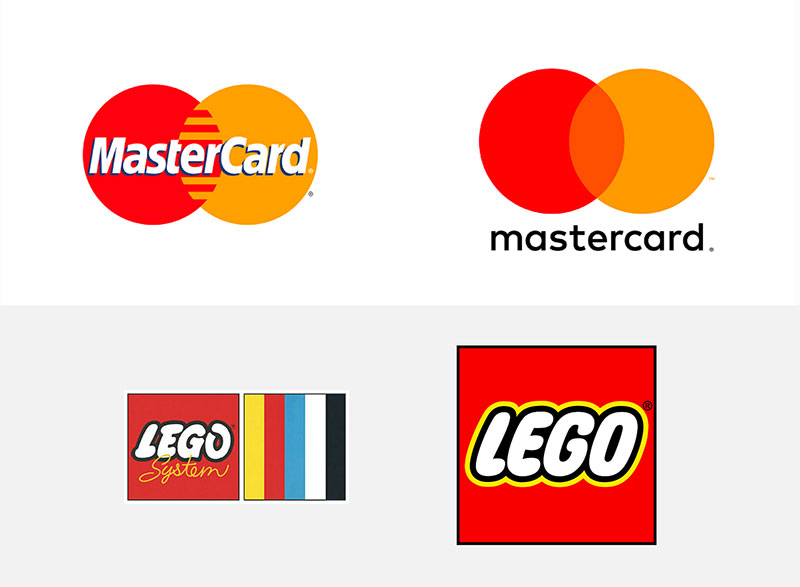Mastering Change: Top Rebranding Strategies for Businesses

Ever wondered why some brands suddenly look new and fresh, while others seem stuck in the past? That’s the magic of rebranding strategies. It’s like giving a business a makeover, transforming its identity to stay ahead in this ever-evolving market.
Imagine walking into a room and everyone notices – that’s what effective rebranding can do for a company.
It’s not just about changing logos or colors; it’s a deep dive into the brand’s soul, aligning its vision with current market trends and customer expectations.
In this article, we’ll unravel the secrets behind successful rebranding. From understanding the nuances of brand evolution to mastering the art of corporate communication, we’re covering it all.
You’ll learn how to breathe new life into a brand, ensuring it resonates with both loyal customers and new audiences.
The Right Reasons for Rebranding
Ever seen a brand change its look and feel? That’s rebranding strategies in action.
It’s like a chameleon changing colors – but for businesses. Let’s dive into why companies decide to hit the refresh button.
Identifying the Need
First things first: Why rebrand? It’s not just about staying trendy. It’s deeper.
Aligning with company vision, mission, and values: Sometimes, a brand needs to evolve to keep up with its own dreams. It’s like outgrowing your old high school clothes. The goal? Stay true to what the company stands for, but with a fresh twist.
Responding to market repositioning and new locations: Markets change, and so should brands. It’s like moving to a new city and adapting to its vibe. Rebranding helps companies stay relevant and relatable.
Adapting to mergers and acquisitions: When companies merge, it’s like two different worlds colliding. A rebrand can be the peace treaty that unites them under a common identity.
Avoiding Misguided Motivations
But wait, there’s a catch. Rebranding for the wrong reasons? Big no-no.
Distinguishing between strategic need and superficial reasons: It’s not just about looking cool. It’s about making sense.
Rebranding should never be a hasty makeup job. It needs a solid reason, like staying aligned with your brand’s core values or responding to genuine market shifts.
Research and Planning
Alright, so you’ve got good reasons to rebrand. What’s next? Homework. Yep, research and planning.
In-depth Analysis
Dig deep. Understand your battlefield before you charge in.
Conducting market and audience research: Know your audience like your best friend. What do they love? What do they need? It’s about getting into their heads.
Learning from customer feedback and preferences: Listen to the chatter. Customer feedback is like gold dust. It tells you what’s working and what’s not.
Historical Insights
History matters. It’s not just about where you’re going, but also where you’ve been.
Drawing inspiration from the company’s past: Your brand’s history is a treasure trove of insights. It’s like reading an old diary and learning from it.
Balancing nostalgia with modernity: It’s a delicate dance. Keep the essence of your brand, but dress it up for today. Think retro vibes with a modern twist.
Developing the Rebranding Strategy

So, you’re set to give your brand a new vibe. Rebranding strategies? They’re like a game plan for your brand’s big leap. Let’s break it down.
Vision and Mission Refocus
First up: What’s your brand’s heartbeat?
Reestablishing the brand’s core values and objectives: It’s like looking in the mirror and asking, “Who am I really?” Get back to the roots. What does your brand stand for? This isn’t just a facelift; it’s about aligning your brand’s soul with its new look.
Customer-Centric Approach
Next: Who are you doing this for? Your audience, right?
Building a strategy around customer insights and experiences: Dive into your customer’s world. What makes them tick? It’s about crafting a brand personality that resonates with them. Like making a playlist that your friend just can’t stop listening to.
Future-Oriented Branding
And then: Where’s your brand headed?
Branding for the company’s future vision and goals: Think of it as setting GPS coordinates for where you want your brand to be in the future. It’s not just about today; it’s about being ready for tomorrow too.
Execution of Rebranding
Alright, strategy’s set. Time to roll it out.
Visual Identity and Design

Visuals speak volumes.
Redesigning logos and visual elements: It’s like choosing the perfect outfit for your brand. The logo, the colors, the fonts – they’re all pieces of the puzzle that tell your brand’s story.
Ensuring consistency across all brand materials: Consistency is key. Whether it’s your website, your business card, or your social media, everything should sing the same tune.
Brand Voice and Messaging
How does your brand talk?
Developing a new brand voice and communication style: It’s like finding the right tone of voice for a character in a story. Your brand’s voice should reflect its personality – be it friendly, professional, quirky, or anything in between.
Aligning messaging with the rebranded identity: Every word counts. Your messages should echo your brand’s new identity. It’s like telling a story that fits the new you.
Implementing the Rebrand
Alright, let’s get real about bringing those rebranding strategies to life. It’s showtime, but with a strategy.
Gradual Introduction
Ease into it. Don’t shock your audience.
Avoiding abrupt changes that can disorient customers: Think of it like easing into cold water. You don’t want to jump in and shock your system – or your customers. A sudden, drastic change can be jarring. It’s all about the art of subtlety.
Introducing new elements in phases: It’s like adding new flavors to a recipe. You do it one at a time, taste, and then decide if you need more. This way, your audience gets to savor each change and adapt smoothly.
Comprehensive Brand Experience
Every touchpoint matters.
Ensuring the rebrand is reflected in all customer touchpoints: Your brand is like a story. Every chapter, every page, every line should feel like it’s part of the same tale. From your website to your social media, to the way your customer service answers the phone – it all should sing the same song.
Enhancing product and service experience in line with the rebrand: It’s not just about looking different; it’s about feeling different. Your products, your services – they should all echo the new vibe you’re setting. It’s like promising a new flavor and making sure it’s there in every bite.
Launch and Promotion

Now, let’s talk about making some noise with your rebranding strategies.
Strategic Rollout
Plan your big moment.
Planning a successful launch campaign: It’s like planning a surprise party. You need the right timing, the right people, and the right message to make an impact.
Utilizing various channels for effective communication: Spread the word far and wide. Use social media, email, your website, even old-school flyers if that’s what works for your audience. It’s about reaching them where they are.
Engaging Stakeholders
Get everyone on board.
Involving employees, customers, and partners in the rebrand process: It’s a team effort. Your employees, your customers, your partners – they’re all part of this journey. Get them excited, get them involved. It’s like building a fan club for your brand’s new era.
Building excitement and anticipation for the new brand: Create a buzz. Tease a little, hint a little, and make them look forward to what’s coming. It’s about building a story that everyone wants to be a part of.
Monitoring and Feedback
So, you’ve rolled out your rebranding strategies.
High five!
But wait, the game’s not over yet. It’s time to listen and learn.
How’s the world reacting to your brand’s new look and feel?
Tracking Brand Sentiment
Keep your ears to the ground.
Assessing customer reactions and feedback post-launch: It’s like reading the room after you’ve told a joke. Are they laughing? Are they confused? Customer reactions are your reality check. Use social media, surveys, and reviews to gauge what’s hitting the mark and what’s missing it.
Making adjustments based on constructive criticism: Feedback is a gift, even when it stings a little. If your audience is telling you something’s not working, listen. It’s about being agile and ready to tweak things. Remember, rebranding is a journey, not a one-time event.
Long-Term Brand Evaluation
Keep the ball rolling.
Continuously evaluating brand performance: It’s like keeping an eye on a plant you’ve just repotted. Is it thriving? Does it need more sunlight or water? Regularly check how your brand is doing in terms of sales, customer engagement, and market presence.
Adapting and evolving the brand as needed: The only constant is change, right? Your brand should be a living, breathing entity that grows and adapts. Stay open to evolving your strategies as the market and your audience’s preferences change.
FAQ On Rebranding Strategies
Why Do Companies Opt for Rebranding?
Rebranding is like hitting the refresh button. Companies do it to stay relevant, align with evolving market trends, or reflect a change in vision and mission.
It’s about keeping the brand’s identity fresh and in tune with its audience’s expectations and the current market dynamics.
What’s the First Step in Rebranding?
The first step? Deep dive into research. Understand your audience, market position, and what your brand stands for. This step sets the foundation for your entire rebranding strategy.
How Do You Know If Your Rebranding Is Successful?
Success in rebranding is measured by customer engagement, brand perception, and ultimately, sales.
If your audience connects with the new brand identity and your business goals are being met, you’ve hit the jackpot.
What Are the Risks of Rebranding?
Risks? There are a few. Losing touch with your loyal customers, diluting your brand’s identity, or miscommunicating your new brand message.
How Long Does the Rebranding Process Take?
Rebranding isn’t an overnight thing. It can take months, sometimes even a year or more, depending on the brand’s size and the rebranding scope.
Can Rebranding Affect My Existing Customer Base?
Absolutely. Rebranding can either strengthen your bond with existing customers or push them away if not done right.
How Important Is Employee Involvement in Rebranding?
Super important! Employees are your brand ambassadors. Getting them on board, excited, and aligned with the new brand identity is crucial.
Should Rebranding Reflect Current Trends?
Yes, but with caution. While it’s important to be trendy, your rebranding should primarily reflect your brand’s unique identity and values.
How Do You Maintain Brand Consistency During Rebranding?
Consistency is key. Ensure that all elements – from your logo to your brand voice – are aligned across all platforms.
What’s the Role of Social Media in Rebranding?
Social media is your megaphone. It’s a powerful tool to introduce your rebranded identity, engage with your audience, and gather feedback. Use it wisely to create buzz and showcase your brand’s new chapter.
Conclusion On Rebranding Strategies
Wrapping up, rebranding strategies are more than just a facelift for your brand. They’re about staying in tune with the times while keeping the essence of what makes your brand unique.
It’s a blend of art and strategy, a dance between the old and the new.
Think of it as a journey. You start by understanding your brand’s core, its vision, and mission. Then, you dive into the world of your audience, grasping their needs and preferences.
It’s about striking that perfect balance between staying true to your roots and evolving with the market trends.
Remember, rebranding isn’t just about changing logos or color schemes. It’s about reshaping your brand’s narrative, ensuring it resonates with your audience, and aligns with your future goals.
It’s a powerful tool that, when done right, can breathe new life into your brand, making it more relevant, engaging, and vibrant.
If you liked this article about rebranding strategies, you should check out this article about companies that need rebranding.
There are also similar articles discussing rebranding questions, rebranding failures, why HBO keeps rebranding, and how to make a logo transparent.
And let’s not forget about articles on how to animate a logo, how to trademark a logo, what is brand positioning, and the evolution of logos.
- Out of This World: Space Color Palettes for Cosmic Designs - 28 April 2024
- The Bungie Logo History, Colors, Font, And Meaning - 27 April 2024
- After Dark: Night Color Palettes for Mysterious Designs - 27 April 2024









